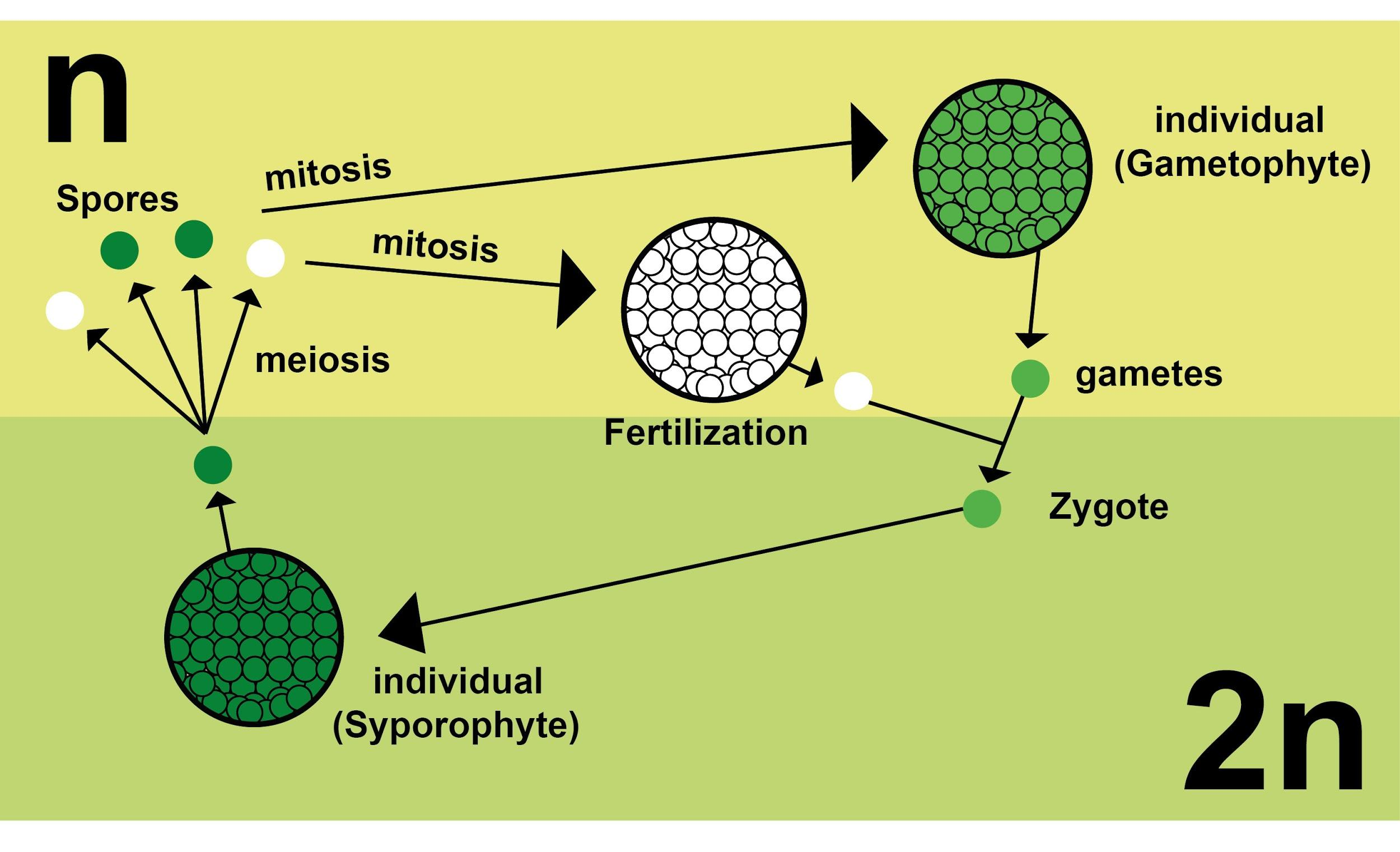
Differentiate between gametophyte and sporophyte.
Answer
572.1k+ views
Hint: Gametophyte and sporophyte are sexual components of a flowering plant. They play an important role in sexual reproduction by showing maturation at different times, called alternation of generation
Complete answer:

Figure: Alternation of generation
Following are the differences between gametophyte and sporophyte:
- In mitosis, the cells formed after a single division have the same number and kind of chromosome as that of the parent cell.
- In meiosis, the cells formed by two divisions of the parent cell have half the amount of genetic information than that of the parent cell.
- A haploid cell is represented by ‘n’ while a diploid cell is represented by ‘2n’
- In plants, there is an alternation between the haploid and diploid phase of the plant, known as alternation of generation.
Note: When a single cell divides two times to form four cells, such a process is called meiosis. While, when a cell divides only once forming two daughter cells, such a process is called mitosis.
Complete answer:

Figure: Alternation of generation
Following are the differences between gametophyte and sporophyte:
| Gametophyte | Sporophyte |
| The gametophyte is a haploid stage in the life cycle of a plant. | A sporophyte is a diploid stage in the life cycle of a plant. |
| In this stage, the formation of gametes takes place. | In this stage, spores are formed which produces gametophytes. |
| In this stage, the formation of gametes takes place with the help of mitosis. | In this stage, the formation of spore takes place with the help of meiosis. |
| There are sets of chromosomes present in gametophyte. | There are two sets of chromosomes present in sporophytes. |
| Reproduction in the gametophyte stage takes place sexually. | Reproduction in the sporophyte stage takes place asexually. |
| The gamete of the gametophyte stage takes part in fertilization or they fuse to form a diploid zygote. | The diploid spore mother cell undergoes meiosis and forms haploid meiospores. |
- In mitosis, the cells formed after a single division have the same number and kind of chromosome as that of the parent cell.
- In meiosis, the cells formed by two divisions of the parent cell have half the amount of genetic information than that of the parent cell.
- A haploid cell is represented by ‘n’ while a diploid cell is represented by ‘2n’
- In plants, there is an alternation between the haploid and diploid phase of the plant, known as alternation of generation.
Note: When a single cell divides two times to form four cells, such a process is called meiosis. While, when a cell divides only once forming two daughter cells, such a process is called mitosis.
Recently Updated Pages
Master Class 12 Business Studies: Engaging Questions & Answers for Success

Master Class 12 Economics: Engaging Questions & Answers for Success

Master Class 12 English: Engaging Questions & Answers for Success

Master Class 12 Maths: Engaging Questions & Answers for Success

Master Class 12 Social Science: Engaging Questions & Answers for Success

Master Class 12 Chemistry: Engaging Questions & Answers for Success

Trending doubts
What are the major means of transport Explain each class 12 social science CBSE

Which are the Top 10 Largest Countries of the World?

Draw a labelled sketch of the human eye class 12 physics CBSE

How much time does it take to bleed after eating p class 12 biology CBSE

Explain sex determination in humans with line diag class 12 biology CBSE

Differentiate between homogeneous and heterogeneous class 12 chemistry CBSE




